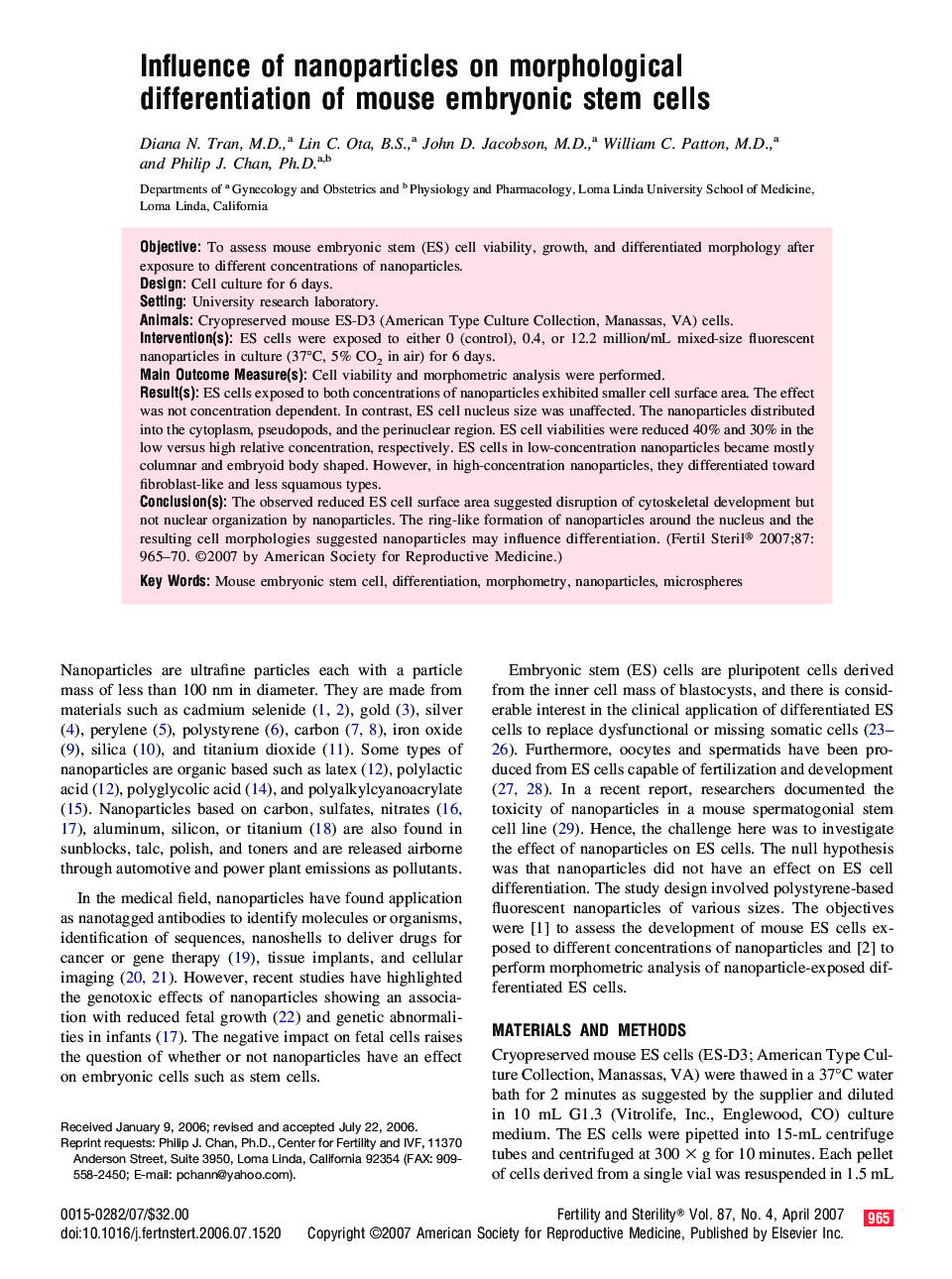| Article ID | Journal | Published Year | Pages | File Type |
|---|---|---|---|---|
| 3939964 | Fertility and Sterility | 2007 | 6 Pages |
ObjectiveTo assess mouse embryonic stem (ES) cell viability, growth, and differentiated morphology after exposure to different concentrations of nanoparticles.DesignCell culture for 6 days.SettingUniversity research laboratory.AnimalsCryopreserved mouse ES-D3 (American Type Culture Collection, Manassas, VA) cells.Intervention(s)ES cells were exposed to either 0 (control), 0.4, or 12.2 million/mL mixed-size fluorescent nanoparticles in culture (37°C, 5% CO2 in air) for 6 days.Main Outcome Measure(s)Cell viability and morphometric analysis were performed.Result(s)ES cells exposed to both concentrations of nanoparticles exhibited smaller cell surface area. The effect was not concentration dependent. In contrast, ES cell nucleus size was unaffected. The nanoparticles distributed into the cytoplasm, pseudopods, and the perinuclear region. ES cell viabilities were reduced 40% and 30% in the low versus high relative concentration, respectively. ES cells in low-concentration nanoparticles became mostly columnar and embryoid body shaped. However, in high-concentration nanoparticles, they differentiated toward fibroblast-like and less squamous types.Conclusion(s)The observed reduced ES cell surface area suggested disruption of cytoskeletal development but not nuclear organization by nanoparticles. The ring-like formation of nanoparticles around the nucleus and the resulting cell morphologies suggested nanoparticles may influence differentiation.
